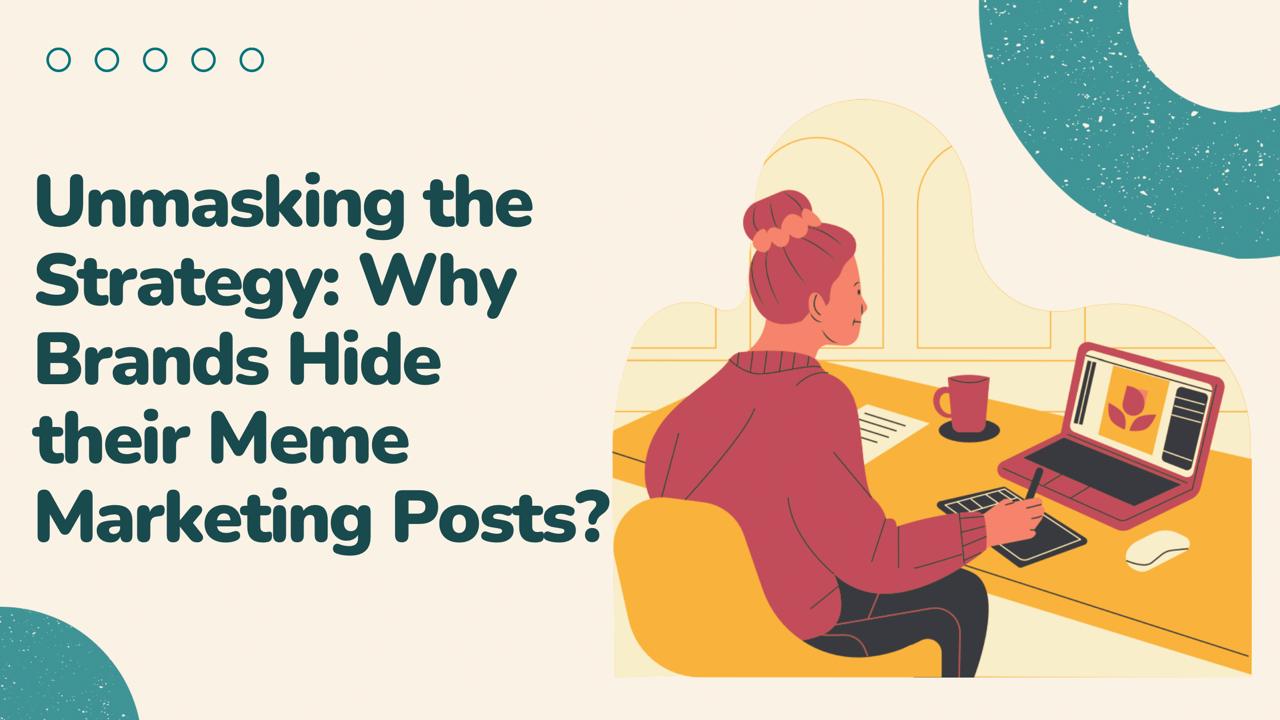The Rise of AI-Generated Influencers: Threat or Opportunity for Brands?
26 January 2023

In the ever-changing realm of digital advertising, memes have evolved into a potent instrument for companies to connect with their target demographics in a relatable and enjoyable way. Nevertheless, even though meme marketing posts have the potential to go viral and are quite popular, it is common to find brands hiding them discreetly. Why do brands opt to hide content meant to enhance engagement and promote a sense of community, as this practice raises curiosity? In this article, we explore the various reasons for this strategic decision, examining how brands navigate the delicate balance between humour and professionalism, and the influence of meme marketing on their digital presence.
Here are the various reasons for the strategic decision to hide meme marketing posts, examining how brands navigate the delicate balance between humor and professionalism, and the influence of meme marketing on their digital presence:
Brand Image and Reputation:
Risk of Controversy: Memes may deal with controversial topics or are interpreted incorrectly. Companies conceal content that could cause controversy or harm their brand to maintain a positive public perception.
Professionalism: Some businesses ought to keep a dark tone, particularly those in more traditional or professional fields. A meme post may be hidden to uphold brand values if it looks too unprofessional.
Audience Segmentation:
Diverse Audience: The comedy in memes might not be appreciated by every audience section of a business. To accommodate a more diverse or serious audience, corporations may choose to conceal meme posts that don't appeal to everyone.
Brand Consistency: Brands want to project a unified voice and vision. To make sure that all material is in line with the main brand message, memes that deviate from this consistency can be hidden.
Performance Metrics:
Engagement Rates: Posts that do not perform well in terms of likes, comments, or shares can negatively impact overall engagement metrics. Brands hide underperforming meme posts to maintain a high engagement rate and positive analytics.
Algorithm Influence: Social media algorithms favour content with higher engagement. By hiding low-performing memes, brands can prevent these posts from dragging down their overall reach.
Seasonality and Relevance:
Time-Sensitivity: Memes often rely on current trends or events. Once a meme loses its relevance, it can appear outdated, prompting brands to hide it to keep their content fresh and timely.
Evolving Trends: The fast-paced nature of internet culture means that what’s funny today may not be funny tomorrow. Brands hide old memes to stay ahead of evolving trends and maintain a modern digital presence.
Content Strategy and Aesthetics:
Visual Consistency: Brands often curate their social media feeds to follow a specific aesthetic or theme. If a meme disrupts this visual flow, it might be hidden to preserve the overall look and feel of the brand's profile.
Strategic Experimentation: Meme marketing can be experimental. Brands may test different types of content to see what resonates. If a meme doesn't achieve the desired effect, it can be hidden as part of the iterative content strategy.
By carefully considering these factors, brands can effectively leverage meme marketing while maintaining their professional image and optimizing their digital presence. This strategic approach allows them to engage with their audience in a fun and relatable way, without compromising their core brand values or overall marketing objectives.